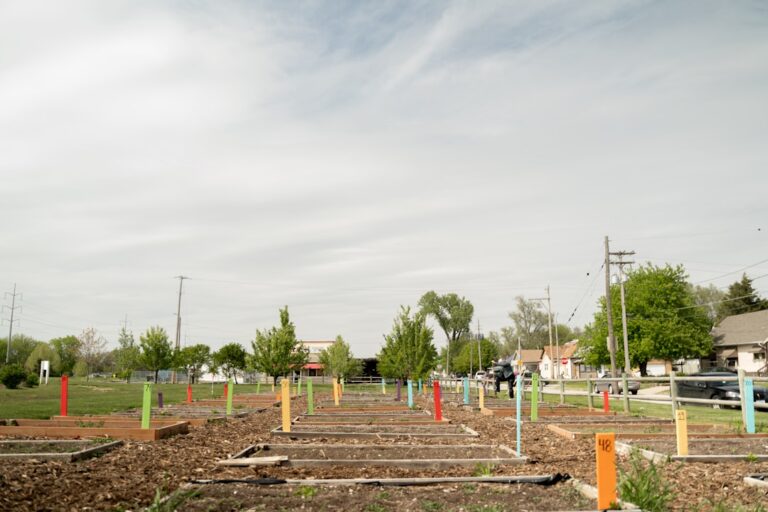Grass roots rescue organizations are often the unsung heroes in the realm of animal welfare. These organizations typically emerge from local communities, driven by passionate individuals who are dedicated to the well-being of animals in need. Unlike larger, more established animal welfare organizations, grass roots rescues often operate on limited budgets and rely heavily on volunteer support.
They focus on immediate, localized issues, such as rescuing stray animals, providing medical care, and finding permanent homes for abandoned pets. The essence of grass roots rescue lies in its community-oriented approach, where individuals come together to address the pressing needs of animals in their vicinity. The scope of grass roots rescue can vary significantly from one organization to another.
Some may focus exclusively on specific species, such as dogs or cats, while others may extend their efforts to include wildlife or farm animals. These organizations often fill critical gaps left by larger entities, particularly in underserved areas where resources are scarce. Their work is characterized by a hands-on approach, with volunteers often engaging directly in rescue operations, fostering animals, and conducting outreach programs to educate the public about responsible pet ownership and animal welfare.
Key Takeaways
- Grass roots rescue organizations are community-based and operate on a small scale to help animals in need.
- Grass roots efforts in animal rescue are important because they can reach animals in local communities that may not be reached by larger organizations.
- Grass roots rescue organizations operate through volunteer efforts, fundraising, and community partnerships to save and rehome animals.
- Success stories of animals saved by grass roots rescue organizations highlight the impact of their work in local communities.
- Grass roots rescue organizations face challenges such as limited resources, lack of funding, and the need for more community support.
The Importance of Grass Roots Efforts in Animal Rescue
Swift Response to Local Crises
One of the most significant contributions of these organizations is their ability to respond quickly to local crises. When a natural disaster strikes, such as a hurricane or wildfire, grass roots rescues are often among the first responders, mobilizing volunteers to evacuate animals from danger zones and provide immediate shelter and care.
Community Involvement and Awareness
Their intimate knowledge of the community allows them to identify at-risk animals and coordinate effective rescue operations that larger organizations may not be able to execute as swiftly. Moreover, grass roots rescues foster a sense of community involvement and awareness regarding animal welfare issues. By engaging local residents in their efforts, these organizations cultivate a culture of compassion and responsibility towards animals.
Education and Long-term Solutions
Educational programs and outreach initiatives often accompany their rescue efforts, helping to inform the public about the importance of spaying and neutering pets, the dangers of abandonment, and the benefits of adopting rather than shopping for pets. This grassroots approach not only addresses immediate needs but also works towards long-term solutions by changing attitudes and behaviors within the community.
How Grass Roots Rescue Organizations Operate

The operational framework of grass roots rescue organizations is typically characterized by a high degree of flexibility and adaptability. Many of these organizations are run entirely by volunteers who dedicate their time and resources to rescuing animals in need. This volunteer-driven model allows them to operate with minimal overhead costs, enabling them to allocate more funds directly towards animal care and rescue efforts.
Volunteers often take on multiple roles, from rescuing animals off the streets to fostering them in their homes until they can be adopted. Fundraising is another critical aspect of how these organizations sustain their operations. Grass roots rescues often rely on donations from community members, local businesses, and small grants from philanthropic foundations.
They may host events such as bake sales, charity runs, or adoption fairs to raise funds and increase visibility within the community. Social media has also become an invaluable tool for these organizations, allowing them to share success stories, promote adoptable animals, and connect with potential supporters on a broader scale. The use of platforms like Facebook and Instagram has enabled many grass roots rescues to build a loyal following that can be mobilized for fundraising campaigns or volunteer opportunities.
Success Stories: Animals Saved by Grass Roots Rescue
| Animal | Rescue Organization | Location | Outcome |
|---|---|---|---|
| Dog | Paws Rescue | New York | Adopted |
| Cat | Whiskers Haven | California | Reunited with Owner |
| Rabbit | Hoppy Tails Rescue | Texas | Fostered |
The impact of grass roots rescue organizations can be illustrated through numerous heartwarming success stories that highlight their dedication and effectiveness. One notable example is the story of a small dog named Bella who was found wandering alone on a busy street. A local grass roots rescue organization received a call about her plight and quickly dispatched volunteers to the scene.
After safely rescuing Bella, they discovered she had been abandoned and was suffering from malnutrition and untreated medical conditions. The organization provided her with veterinary care, including vaccinations and spaying, before placing her in a loving foster home. Bella’s transformation was remarkable; she blossomed under the care of her foster family and eventually found her forever home with a loving couple who had been searching for a companion.
This story is just one among many that demonstrate how grass roots rescues not only save lives but also facilitate meaningful connections between animals and humans. Each successful adoption represents not just a happy ending for an individual animal but also a ripple effect that encourages others in the community to consider adopting rather than purchasing pets. Another inspiring case involves a group of volunteers who banded together to rescue a colony of feral cats living near an abandoned building.
Recognizing the need for intervention, they implemented a trap-neuter-return (TNR) program aimed at controlling the population while ensuring the cats received necessary medical care. Over time, they were able to socialize many of the cats, leading to successful adoptions while allowing others to remain in their familiar environment with ongoing support for food and shelter. This initiative not only improved the lives of the cats but also educated the community about humane methods for managing feral populations.
Challenges Faced by Grass Roots Rescue Organizations
Despite their noble intentions and impactful work, grass roots rescue organizations face numerous challenges that can hinder their effectiveness. One significant obstacle is financial instability. Many of these organizations operate on shoestring budgets, relying heavily on donations that can fluctuate based on economic conditions or community interest.
This financial uncertainty can limit their ability to provide adequate medical care for rescued animals or expand their outreach programs. Additionally, unexpected expenses—such as emergency medical treatments for rescued animals—can strain already tight budgets. Another challenge is the sheer volume of animals in need compared to the resources available for rescue efforts.
Grass roots rescues often find themselves overwhelmed by the number of stray or abandoned animals in their communities.
The emotional toll on volunteers who witness suffering animals without the means to help them all can be significant, leading to burnout and turnover within these organizations.
Furthermore, navigating local regulations regarding animal control can complicate their operations, especially if they lack formal partnerships with municipal shelters or animal control agencies.
How to Support Grass Roots Rescue Efforts

Volunteering Time and Skills
Community members can contribute to grass roots rescue organizations in various ways beyond monetary donations. By volunteering their time and skills, individuals can assist with tasks such as animal care, fundraising events, or administrative duties. This not only helps the organizations but also provides an opportunity for individuals to make a hands-on impact.
Spreading Awareness and Fostering Community Involvement
In addition to direct involvement, spreading awareness about local grass roots rescues can significantly impact their success. Sharing posts on social media about adoptable pets or upcoming events helps increase visibility and attract potential adopters or donors. Local businesses can also play a vital role by partnering with rescues for fundraising events or offering discounts to customers who adopt pets from these organizations.
Creating a Network of Support and Advocating for Responsible Pet Ownership
By creating a network of support within the community, individuals can help ensure that grass roots rescues have the resources they need to continue their important work. Moreover, advocating for responsible pet ownership practices within one’s social circles can contribute to reducing the number of abandoned or stray animals in the community. Encouraging friends and family to adopt rather than shop for pets fosters a culture of compassion towards animals while supporting local rescues that are working tirelessly to find homes for those in need.
Grass Roots Rescue: Making a Difference in Communities
The influence of grass roots rescue organizations extends far beyond individual animal rescues; they play an integral role in shaping community attitudes towards animal welfare. By addressing local issues related to stray populations and abandonment, these organizations contribute to creating safer environments for both animals and residents alike. Their presence often leads to increased awareness about responsible pet ownership practices, which can result in lower rates of abandonment and neglect over time.
Additionally, many grass roots rescues engage in educational outreach programs aimed at schools and community centers. These initiatives teach children about empathy towards animals and the importance of caring for pets responsibly.
The collaborative nature of these organizations also fosters connections among residents who share a passion for animal welfare. Volunteers often form lasting friendships through their shared experiences in rescue work, creating a supportive network that extends beyond just animal care. This sense of community not only enhances the effectiveness of rescue efforts but also enriches the lives of those involved.
The Future of Grass Roots Rescue
Looking ahead, the future of grass roots rescue organizations appears promising yet challenging as they navigate an evolving landscape in animal welfare. As awareness about animal rights continues to grow globally, there is potential for increased support for local rescues through donations and volunteerism. The rise of social media has already transformed how these organizations connect with supporters; leveraging technology will be crucial for expanding outreach efforts and fundraising capabilities.
However, challenges such as financial sustainability and resource allocation will persist as long as there are more animals in need than available resources. Grass roots rescues may need to explore innovative partnerships with larger organizations or municipal shelters to enhance their capacity for rescue operations while maintaining their community-focused approach. Furthermore, as communities become more engaged in animal welfare issues, there is an opportunity for grass roots rescues to advocate for policy changes that benefit both animals and residents alike.
By collaborating with local governments on initiatives such as TNR programs or spay/neuter clinics, these organizations can play an active role in shaping policies that promote humane treatment of animals. In conclusion, while grass roots rescue organizations face numerous challenges ahead, their unwavering commitment to animal welfare continues to make a profound impact on communities across the globe. Through collaboration, innovation, and community engagement, they will undoubtedly remain at the forefront of efforts to create a better world for animals in need.
If you are interested in learning more about the power dynamics within society and how social institutions are structured, check out this insightful article on Introduction to Indian Society: Exploring Social Institutions, Structure, and Power Dynamics. Grass roots rescue efforts often intersect with larger societal structures, making it important to understand the dynamics at play.
FAQs
What is grass roots rescue?
Grass roots rescue refers to the efforts of local individuals or small organizations to rescue and care for animals in need, often without the support of larger, established animal welfare organizations.
What types of animals are typically helped by grass roots rescue organizations?
Grass roots rescue organizations often focus on helping a variety of animals, including dogs, cats, horses, and other domestic animals, as well as wildlife in some cases.
How do grass roots rescue organizations operate?
Grass roots rescue organizations typically rely on volunteers, donations, and community support to operate. They may rescue animals from shelters, the streets, or abusive situations, and provide them with medical care, foster homes, and ultimately find them permanent homes.
What are some challenges faced by grass roots rescue organizations?
Grass roots rescue organizations often face challenges such as limited funding, lack of resources, and the emotional toll of dealing with animals in distress. They may also struggle to find suitable foster homes and adoptive families for the animals they rescue.
How can people support grass roots rescue organizations?
People can support grass roots rescue organizations by volunteering their time, donating money or supplies, fostering animals, and spreading the word about the organization’s work. Additionally, supporting adoption from these organizations can help them continue their efforts.
























+ There are no comments
Add yours